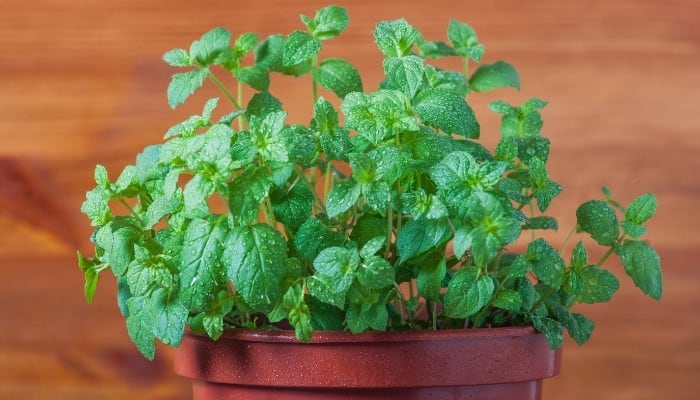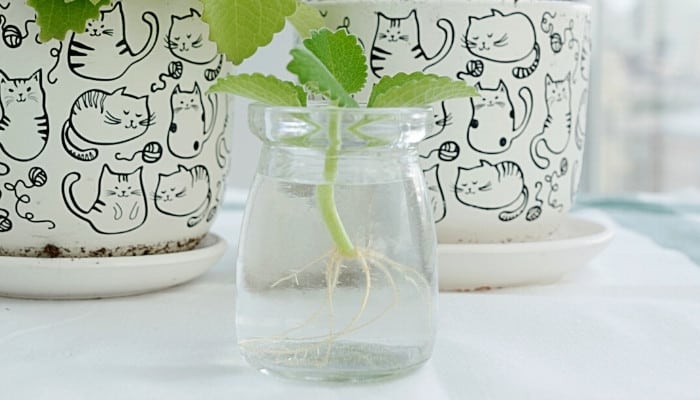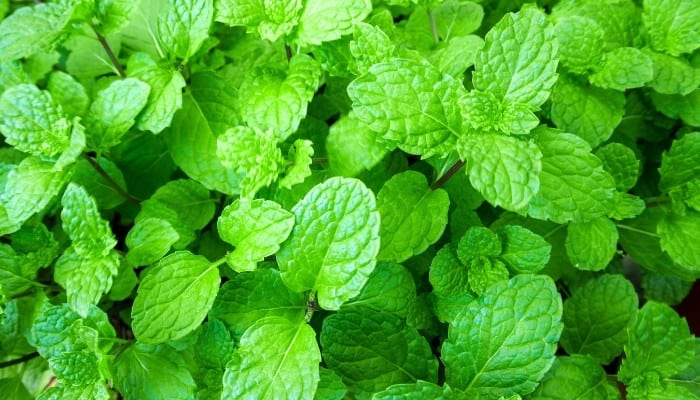If you have braved through a scorching summer, you are likely acquainted with invigorating mint beverages and teas.
Mint is a common herb used in cooking and beverages, and its fragrant oil is often used in aromatherapy.
Mint plants are generally easy to care for; the only maintenance it requires is pruning. However, if left unchecked, mint quickly takes over surrounding beds.
On average, mint plants can grow 2 feet tall in just five months.
Widely distributed in temperate regions of Europe, Asia, Africa, and North America, mint thrives in moist soil with full or partial sun.
There are hundreds of types with colors ranging from light green to yellowish and with serrated or folded edges.
How long can mint plants live? Mint plants are perennials and can live for 5-10 years when planted in the ground. Potted mint plants can also last for more than 5 years when cared for properly. Every winter, the mint plant lies dormant and regrows in spring. Mint plants grown in water can survive for months with proper care.
Some varieties of mint, such as peppermint or spearmint, produce an aroma that is so strong it can be used as a natural insect repellent.
In contrast, other types, like apple mint, are perfect ornamental plants.
Their basic upkeep doesn’t differ a great deal, so you can easily grow many different varieties to both decorate your garden and provide an endless supply of the herb for your kitchen.
For a little help with keeping your mint thriving all year long, keep reading.
Mint Plants’ Life Expectancy
Mint is a hardy perennial, which means you don’t have to plant it every season. After lying dormant each winter, it starts to revive and sprout again in the spring.
Its hardy nature is due to strong roots that rapidly spread underground and grow new shoots.
While the leaves and stems above the ground may die back in winter, the roots survive and sprout again as soon as the weather gets warmer in spring.
Given the proper care, mint plants typically live for 5-10 years.
Lifespan of Mint Plants Planted in the Ground
Mint planted in the ground is hardier than mint grown in containers. The open soil allows the plant to develop strong roots and tolerate temperature variances.
For this reason, mint can live for up to 10 years when planted in the ground.
Lifespan of Potted Mint Plants
Potted mint plants also regrow every year, so they survive for many years. Unless the potting soil is very poor, this plant should last for more than 5 years.
It is recommended to replant mint into fresh soil every 2-3 years to enhance its rich flavor and aroma.
However, replanting is not strictly necessary, and you will find that a mint plant can thrive in the same container for many years.
Lifespan of Mint Plants Grown in Water
If you provide the plant with access to plenty of bright sunlight, change the water every 2-3 days, and feed weekly with a balanced fertilizer, you can keep a mint plant alive in water for many months.
Ideal Growing Conditions for Mint

Mint is a vigorous plant that needs minimal care; you don’t fertilize it or do much else besides keeping the plant out of direct sunlight.
All you need to do is plant it, and a fully grown mint plan will be there in just months.
Be aware that mints can be invasive if left unchecked.
Not only will the roots spread to establish new plants, but the plant will also send out above-ground runners that root readily wherever they touch soil.
So, it’s a good thing that mint plants can be grown in containers or water in addition to soil in the garden. Below, we have listed a few conditions that are ideal for mint plants.
Soil
Mint can grow in most types of soil; it prefers rich, loamy soil with humus content.
This type of soil has all the necessary nutrients and retains moisture for long periods, making it ideal for growing mint plants. The pH level should be between 6 and 7.
Water
All types of mint love moist soil, so regular watering is necessary. Mint plants do not like waterlogged soil; they prefer soil that drains well and is moist but not soggy.
Waterlogged soils can cause root rot and the eventual death of the mint plant.
Light
Mint prefers shady and humid environments.
Direct sunlight or extremely hot climates can dry out the plants too quickly, so areas that receive partial shade are a good position for the mint plant.
However, mint can grow in well-lit places as well.
Nutrients
No fertilizer or special treatment is necessary for mint plants, as they are very hardy and grow rapidly.
If you do choose to fertilize, an all-purpose, organic garden fertilizer, like the one I use in my garden, is best.
Temperature
The optimum temperature range for most mint plants is between 50-77°F (10-25°C).
Species like spearmint tolerate higher temperatures, while peppermint can tolerate colder temperatures.
Pruning
The mint plant should be pruned regularly; the more you prune, the more it grows and delays flowering.
It’s best to give a vigorous prune just before bloom at the start of summer to promote growth and encourage new shoots.
Tips for Growing Mint in Water

Mint can live and grow in water for months. It’s a great way to grow mint indoors should your outdoor space be limited.
Below are a few tips that you should keep in mind if you want to grow mint plants in water.
- Take a healthy cutting, at least 5-6 inches long.
- Remove excess leaves; only leave a few leaves on the top.
- Place the cutting in clear water in a glass container.
- Keep the container where it gets 4-6 hours of sunlight each day.
- Change the water twice weekly.
- Add all-purpose plant food to the water every week; this will keep the plant nourished.
- If the roots become too long, make sure you trim them to avoid them choking the plant.
Related Questions:
How Do I Make My Mint Plant Bushy?
It’s pretty easy to keep your mint plant bushy; you just have to prune it.
First, regularly cut the mature shoots back to promote new growth and help maintain a fuller plant.
Also, prune your mint extensively at the start of the growing season to encourage loads of new growth.
Pinch out the growing tips to produce new foliage and promote bushier growth when the new plants start growing.
Can You Use Mint After It Flowers?
Yes, it’s perfectly fine to use mint after it flowers. The only thing is that it will lose a bit of flavor after flowering, so you’ll need to use more leaves than usual.
Learn more about mint flowering and how to stop it in our article here.
How Many Types of Mint Are There?
There are hundreds of species of mint; some are wild while others have been hybridized or cultivated.
Some common types of mint used in food and drink preparation are spearmint, chocolate mint, apple mint, and peppermint.
Key Takeaways
The aromatic mint plant is excellent for adding a refreshing twist to summer beverages or making a minty treat.
It’s also super easy to grow. By following a few simple steps, your fresh mint plant will be growing before you know it.
Mint loves moist soil and shady environments but also tolerates direct sunlight. You can plant it indoors, outdoors, in containers, or on the ground.
It will keep growing and growing for years as long as you trim it back and give it a bit of love and care.

